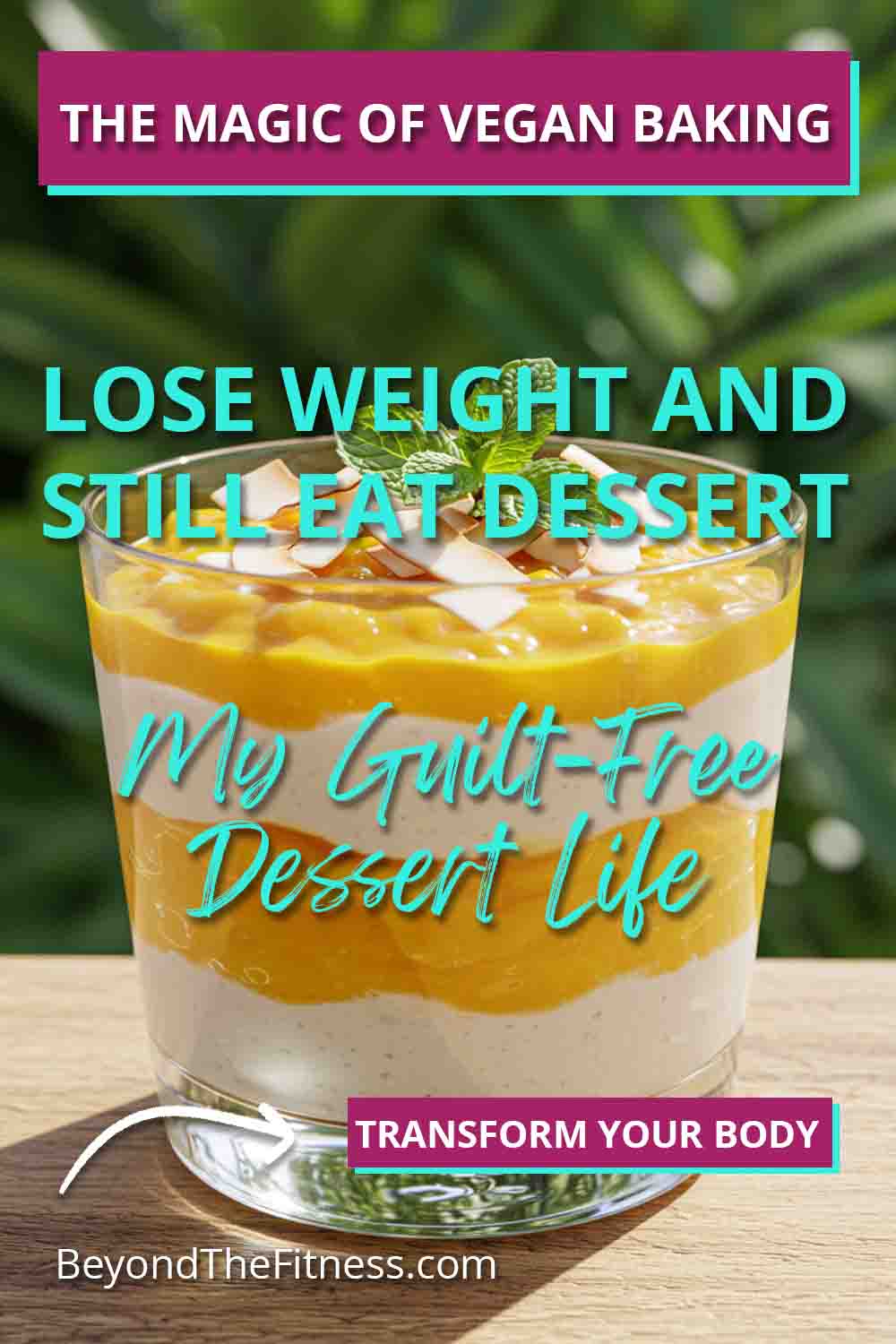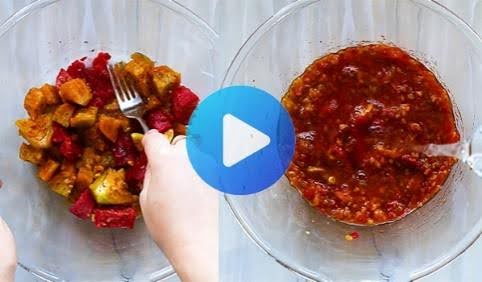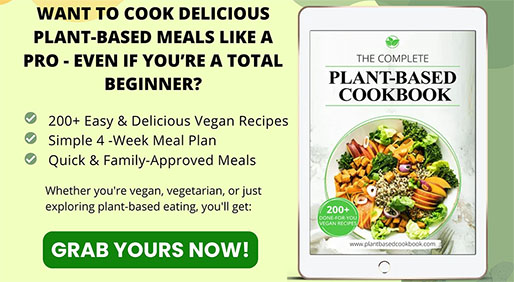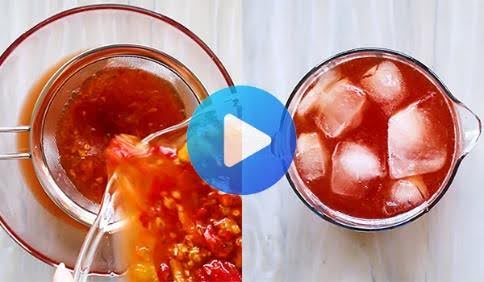It’s a question I hear all the time in my work helping women with weight loss: Can I really lose weight and still eat dessert? Many people think that starting a weight loss journey means saying goodbye forever to cookies, cakes, and pies. I understand why people feel this way. Traditional desserts are often loaded with sugar, butter, and white flour, which can pack a lot of calories without much nutrition. Eating too many of these can definitely make weight loss harder.
But what if I told you there might be a way to have your cake (or cookie) and eat it too, without completely derailing your progress? This is where something called vegan baking comes into the picture. It might sound like magic, but it’s really about making smart food choices.
Understanding Weight Loss Basics First
Before we dive into baking, let’s quickly touch on weight loss itself. At its core, losing weight usually involves managing your energy balance. This means paying attention to the calories you eat and the calories your body burns. To lose weight, you generally need to burn more calories than you consume over time.
Food gives us energy, measured in calories. But not all calories are created equal when it comes to health and feeling full. Foods packed with nutrients like fiber, protein, vitamins, and minerals help your body work well and keep you satisfied. These are called nutrient-dense foods. Think fruits, vegetables, whole grains, and lean proteins.
Insider Tip: Enjoying Healthy and Flavorful Plant-Based Dishes with The Complete Plant Based Recipe Cookbook
On the other hand, many traditional desserts are calorie-dense but nutrient-poor. They give you lots of calories quickly, often from sugar and unhealthy fats, but don’t provide much lasting energy or fullness. This can lead to energy crashes and cravings, making it harder to stick to your eating plan.
For women, factors like hormonal changes throughout the month can also influence appetite, cravings (especially for sweets), and how our bodies store fat. Finding healthy ways to manage these cravings is really important for long-term success. This is one area where exploring different types of treats, like those from vegan baking, can be helpful.
What Exactly is Vegan Baking?
So, what does “vegan” mean in baking? It’s simple: vegan baking uses only plant-based ingredients. This means no ingredients that come from animals.
In traditional baking, common ingredients include:
- Eggs
- Butter
- Milk (from cows)
- Cream
- Honey (sometimes debated, but generally avoided in strict veganism)
Vegan baking replaces these with plant-based alternatives. You might be surprised by how many options there are.
Common substitutes include:
- For Eggs: Flax eggs (ground flaxseed mixed with water), chia eggs (chia seeds mixed with water), applesauce, mashed bananas, silken tofu, commercial egg replacers. Eggs act as binders and add moisture, and these substitutes can do similar jobs.
- For Butter: Coconut oil, olive oil (in some recipes), vegetable shortening (check labels), vegan butter spreads (made from oils like avocado, coconut, or olive), applesauce, or nut butters. Butter adds fat, flavor, and tenderness. These replacements provide fat and moisture.
- For Milk: Plant-based milks like almond milk, soy milk, oat milk, cashew milk, or coconut milk. These provide liquid and richness, just like dairy milk.
- For Cream: Full-fat coconut milk (the thick part), cashew cream (blended soaked cashews), silken tofu blended until smooth. These add creaminess and richness.
- For Honey: Maple syrup, agave nectar, date syrup, molasses. These provide sweetness and moisture.
Using these swaps means you can make vegan versions of almost any dessert you can think of – cookies, cakes, muffins, brownies, pies, and more.
How Can Vegan Baking Help with Weight Loss?
Now, let’s connect this back to weight loss. How can switching out butter and eggs potentially help you reach your goals? It’s not automatic – a vegan cookie can still be high in calories if it’s huge or loaded with sugar and oil. But, vegan baking often has characteristics that can be beneficial for weight management when done thoughtfully.
Here are a few reasons why:
Often Lower in Saturated Fat
Animal products like butter and cream are major sources of saturated fat. While some fat is essential for our bodies, diets high in saturated fat are linked to health concerns and can be very calorie-dense. Vegan baking relies on plant-based fats like oils, nuts, seeds, and avocados. While these still contain fat and calories, they are typically higher in unsaturated fats, which are generally considered healthier for your heart. Replacing butter with options like applesauce or mashed banana can significantly cut down fat and calories too.
Potential for Lower Overall Calories
Because vegan baking often uses substitutes like fruit purees (applesauce, banana) for fat or eggs, the final product can sometimes be lower in calories than its traditional counterpart. For example, using applesauce instead of oil or butter reduces the fat content dramatically. Using plant milks like unsweetened almond milk instead of whole dairy milk also saves calories. Remember, this isn’t always the case. Some vegan ingredients, like coconut oil or cashew cream, are still high in calories. The key is the specific recipe and ingredients chosen.
Emphasis on Whole Food Ingredients
Many vegan baking recipes naturally lean towards using more whole foods. Think about recipes that use:
- Whole wheat flour or oat flour instead of white flour.
- Fruits (fresh, dried, or pureed) for sweetness and moisture.
- Nuts and seeds for texture and healthy fats.
- Beans or legumes (like black beans in brownies) for structure and fiber.
These whole food ingredients bring more than just calories. They provide fiber, vitamins, minerals, and antioxidants. Fiber is especially important for weight loss. It helps you feel full and satisfied after eating, which can prevent overeating. It also aids digestion and helps stabilize blood sugar levels. Traditional desserts made with white flour and refined sugar often lack this beneficial fiber.
Higher Fiber Content
As mentioned, the use of whole grains, fruits, nuts, seeds, and even beans means vegan baked goods are often higher in fiber than traditional ones. Fiber adds bulk to food without adding digestible calories. It slows down digestion, leading to a more gradual release of sugar into the bloodstream and helping you feel fuller for longer. This feeling of fullness, or satiety, is a huge advantage when you’re trying to manage your calorie intake. Feeling satisfied makes it easier to resist unhealthy snacks between meals.
Mindful Ingredient Choices
The process of vegan baking often encourages you to be more mindful about what goes into your food. When you can’t automatically reach for butter and eggs, you start thinking more carefully about substitutes and their nutritional profiles. This can lead to healthier choices overall, like opting for natural sweeteners in moderation or finding ways to boost the nutritional content of your treats.
Making Smart Choices: Vegan Baking for Weight Loss
Just because a dessert is vegan doesn’t automatically make it a “health food” or guarantee it will help you lose weight. A giant vegan cookie loaded with coconut oil and maple syrup can still pack a significant calorie punch. The “magic” really lies in making smart, informed choices within the world of vegan baking.
Here are some things I advise my clients to keep in mind:
Portion Control is Still King
This is perhaps the most important point. Whether a brownie is vegan or not, eating the whole pan is not conducive to weight loss. Enjoy your vegan treats in moderation. Bake mini muffins instead of large ones. Cut smaller slices of cake or pie. Savor one or two cookies instead of half a dozen. Planning your treats and sticking to reasonable portion sizes is essential.
Focus on Recipes Using Whole Foods
Look for recipes that prioritize ingredients like:
- Whole grain flours (whole wheat, oat, spelt, buckwheat)
- Oats (rolled oats, oat flour)
- Fruits and vegetables (bananas, applesauce, pumpkin puree, zucchini, carrots, sweet potatoes, even beans)
- Nuts and seeds (in moderation, as they are calorie-dense)
- Natural sweeteners (used sparingly)
These ingredients boost the fiber, vitamin, and mineral content of your dessert, making it more satisfying and nutritious.
Be Mindful of Added Sugars
Vegan doesn’t mean sugar-free. Maple syrup, agave nectar, coconut sugar, and date syrup are often used in vegan baking. While these might be less processed than white sugar, they are still sugars. They contain calories and can impact your blood sugar levels. Use them in moderation. Look for recipes that rely more on the natural sweetness of fruit, like bananas or dates, or recipes that simply use less sweetener overall. You can often reduce the amount of sugar called for in a recipe without a huge impact on the final result, especially once your taste buds adjust.
Watch the Fats
Healthy fats from sources like nuts, seeds, avocados, and coconut oil are good for you, but they are also high in calories. A little goes a long way. Be mindful of recipes that call for large amounts of oil or vegan butter. Sometimes, you can reduce the amount or substitute part of the fat with fruit puree like applesauce or pumpkin puree to lower the calorie count. For example, if a recipe calls for 1/2 cup of oil, try using 1/4 cup of oil and 1/4 cup of unsweetened applesauce.
Smart Ingredient Swaps
Get creative with substitutions to make recipes healthier:
- Replace some or all of the oil/butter with unsweetened applesauce, mashed banana, or pumpkin puree.
- Use whole wheat pastry flour or white whole wheat flour instead of all-purpose white flour for a finer texture than regular whole wheat.
- Boost fiber and nutrients by adding shredded zucchini or carrots to muffins or breads.
- Use unsweetened plant milk instead of sweetened versions.
- Add protein powder (vegan) to some recipes like muffins or cookies to increase satiety.
Delicious Vegan Dessert Ideas for Your Journey
Thinking about trying some vegan baking? Here are a few ideas that tend to be more nutrient-dense and potentially lower in calories than their traditional counterparts, making them better fits for a weight loss plan (remember portion control).
- Black Bean Brownies: Don’t let the name scare you. Pureed black beans replace flour and some fat, adding amazing fudginess, fiber, and protein. When combined with cocoa powder and sweetener, you don’t taste the beans.
- Avocado Chocolate Mousse: Blended avocado creates an incredibly creamy and rich mousse without any dairy. Avocado provides healthy fats. Combine it with cocoa powder, a touch of sweetener, and maybe some vanilla.
- Oatmeal Cookies with Fruit and Nuts: Use rolled oats, whole wheat flour, and swap butter for applesauce or mashed banana. Sweeten naturally with chopped dates or raisins, and add a small amount of nuts or seeds for texture and healthy fats.
- Fruit Crumbles with Oat Topping: Use your favorite fruits (berries, apples, peaches) as the base. Make a crumble topping using rolled oats, a little whole wheat flour, cinnamon, and a small amount of coconut oil or vegan butter, and a touch of maple syrup. This is much lighter than traditional pie.
- Chia Seed Pudding: While not exactly “baked,” this is a fantastic vegan dessert option. Mix chia seeds with plant milk and a touch of sweetener and vanilla. Let it sit in the fridge until it thickens into a pudding-like consistency. Top with fresh fruit. Chia seeds are packed with fiber and omega-3 fatty acids.
- Nice Cream: Blend frozen bananas (and other frozen fruits like berries or mango) in a high-speed blender until smooth and creamy, like soft-serve ice cream. It’s naturally sweet and dairy-free.
These are just starting points. There are thousands of fantastic vegan baking recipes available online and in cookbooks. Look for those that emphasize whole ingredients and are mindful of added sugars and fats.
Fitting Vegan Treats into Your Weight Loss Plan
So, you’ve baked some delicious, healthier vegan cookies. How do they fit into your overall plan?
- Treats, Not Staples: Remember that even healthier desserts are still treats. They shouldn’t replace nutrient-dense meals and snacks like fruits, vegetables, lean proteins, and whole grains, which should form the foundation of your diet.
- Plan Ahead: If you know you want to enjoy a vegan brownie after dinner, account for its approximate calories and macronutrients (protein, carbs, fat) in your daily plan. This helps you stay within your overall goals.
- Balance is Key: Weight loss is about overall patterns, not just one meal or snack. Enjoy your planned treat, and make sure the rest of your day includes balanced meals and physical activity. One healthier dessert won’t derail your progress if your overall lifestyle supports your goals.
- Listen to Your Body: Pay attention to how different foods make you feel. Does a smaller portion of a fiber-rich vegan treat satisfy your sweet craving without causing an energy crash? Learning your body’s signals is crucial for sustainable healthy eating. For many women I work with, having a planned, satisfying, healthier treat helps prevent feelings of deprivation that can lead to later binges on less healthy options.
Beyond Weight Loss: Other Potential Perks
While our focus here is weight loss, it’s worth noting that incorporating more plant-based foods, including through vegan baking, can have other benefits too.
You Might Be Interested In: Exploring Delicious Vegan Recipes With This Cookbook
- Digestive Health: The increased fiber content can be great for keeping your digestive system regular.
- Nutrient Variety: Exploring vegan recipes can introduce you to new ingredients and nutrients you might not have eaten otherwise.
- Ethical and Environmental Considerations: For many people, choosing vegan options aligns with their values regarding animal welfare and environmental sustainability.
Getting Started with Vegan Baking
Feeling inspired to give it a try? It doesn’t have to be complicated.
- Start Simple: Begin with easy recipes like oatmeal cookies, simple muffins, or chia seed pudding. Don’t try to tackle a complex layer cake on your first attempt.
- Stock Your Pantry: Gradually build up some vegan baking staples:
- Ground flaxseed or chia seeds (for egg replacement)
- Your favorite unsweetened plant milk (almond, soy, oat)
- A good quality oil (like coconut or light olive oil) or vegan butter spread
- Fruit purees (unsweetened applesauce, mashed bananas – you can freeze ripe bananas)
- Whole grain flours (whole wheat pastry flour, oat flour – you can make oat flour by blending rolled oats)
- Natural sweeteners (maple syrup, dates)
- Cocoa powder, vanilla extract, baking soda, baking powder, cinnamon.
- Find Reliable Recipes: Look for recipes from reputable vegan blogs or cookbooks. Read reviews if possible. Recipes specifically designed to be vegan often work better than trying to adapt a traditional recipe yourself, especially when you’re starting out.
- Don’t Fear Failure: Vegan baking can sometimes be a bit different. Textures might vary. Not every recipe will be perfect on the first try. Learn from each attempt and adjust as needed. It’s a fun learning process.
So, can you lose weight and still eat dessert? My answer is yes, absolutely – especially when you explore options like mindful vegan baking. By choosing recipes wisely, focusing on whole ingredients, controlling portions, and integrating these treats into an overall healthy lifestyle that includes balanced meals and regular exercise, you can satisfy your sweet tooth without sacrificing your progress. It’s not magic, but thoughtful choices that make it possible.
Related YouTube Video
Final Thoughts
Finding balance is key in any weight loss journey, especially for women dealing with unique hormonal shifts and metabolic considerations. Depriving yourself completely often backfires. Learning to make or choose healthier versions of foods you enjoy, like desserts made through vegan baking, can be a powerful tool. It allows for enjoyment and satisfaction, making the whole process feel more sustainable and less like a punishment. Remember that vegan baking is a strategy, not a magic bullet. Combine it with portion awareness, nutrient-dense meals, and movement for the best results. It’s about creating a healthy relationship with all foods, including the sweet ones.







